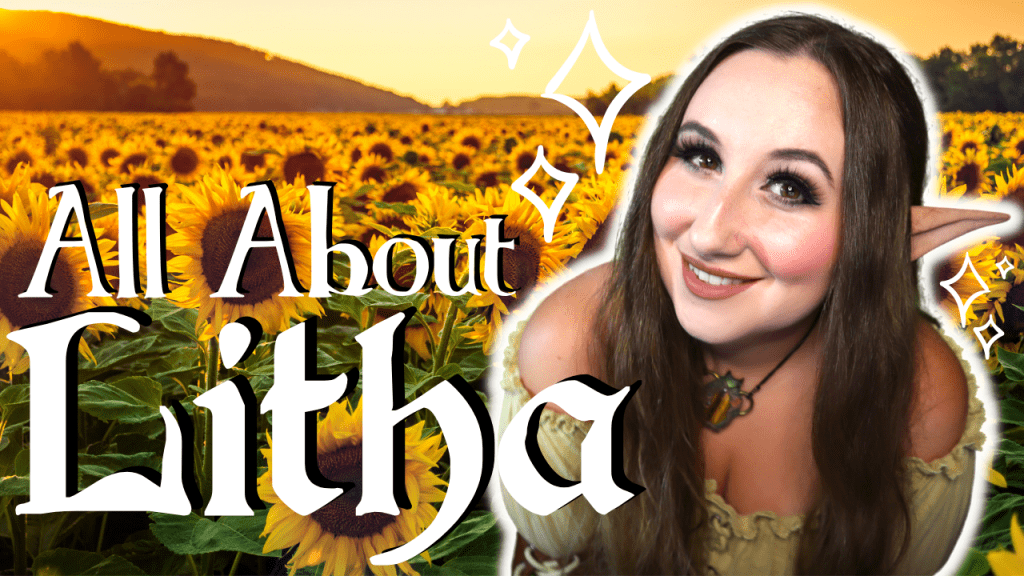
Learn all about how to work with the Summer Solstice. Discover the origins, traditions, and correspondences of the sabbat Litha.
This post may contain affiliate links and I may earn a small commission when you click on the links at no additional cost to you! Thank you in advance for helping to support Feralwood Farm.

More of a Visual Learner? Watch the Video HERE!
What is Litha?
Also known as Midsummer, Litha takes place during the Summer Solstice which lies between June 18th-22nd in the Northern Hemisphere, and December 18th-22nd in the Southern Hemisphere. This day is the longest day of the year and the day when the sun reaches it’s zenith in the sky, seeming to stand still. Litha is also one of the eight sabbats on the Wheel of the Year, and represents the warmth of the Summer, and the celebration of light as the Wheel now turns to darker days ahead.

Origins of Litha
It is difficult to determine the exact origins of Litha, as the Summer Solstice is celebrated across many different cultures across the globe. The name Litha, meaning “gentle” or “navigable” is first seen in De Temporum Ratione (“The Reckoning of Time) written by the monk Bede. It is believed the name was given due to the calm breezes that smoothed the sea during this time of year.
Others also say that the name is actually of Xhosa origin, and means “to illuminate” or “to shine brightly”, keeping with the themes of daylight, sun worship, and fire.
Other Names or Similar Celebrations
- Midsummer/Midsummer’s Eve
- Summer Solstice
- St. John’s Day
- Vestalia
Common Traditions for Litha
Fire was a common theme, and hilltop bonfires often dotted the countryside. Other events included setting large wheels on fire and rolling them down into bodies of water.
Romans celebrated Juno during this time, and therefore this month was often filled with marriages. Vesta was also another celebrated goddess, and was often given offerings of salted meat for eight days in exchange for blessings upon the home.
It is rumored that carrying a bit of rue in your pocket and keep pesky Fae away since they said to be very active around this sabbat.
Stone circles such as Stonehenge are strongly associated with the Summer Solstice, as the stones seem to be oriented to highlight the sunrise on that parituclar morning.

Correspondences of Litha
Colors
- Green
- Gold
- Yellow
- Red
- Orange
- White
Crystals
- Calcite
- Carnelian
- Citrine
- Amber
- Sunstone
- Garnet
- Tiger’s Eye
- Emerald
- Jade
Trees
- Oak
- Elder
Herbs/Plants
- Cinnamon
- Sunflowers
- Marigold
- Honeysuckles
- Daisy
- Dandelion
- Rose
- Yarrow
- Chamomile
- Lavender
- St. John’s Wort
Food & Drink
- Oranges
- Lemons & Lemonade
- Cheese
- Berries
- In-season veggies
- Honey Cakes
- Mead
- Wine
- Sun Tea
Dieties
- Áine
- Horus
- Apollo
- Ra
- Cernunnos
- Pan
- Bast
- Fortuna
- Helios
- Arinna
- Juno
- Aphrodite
- Vesta
Ideas for Magickal Workings
- Rebirth
- Transformation
- Power
- Purity
- Life
- Balance
- Protection
- Love
- Fire Magick
- Fae Magick

Download your FREE Litha Grimoire Page!
Did you know I use Canva to make all the graphics I use here on my website? Click here to try it out for yourself!
Recommended Reading
Don’t want to wait to start your next Witchy read? You try Audible Plus and get two free Audiobooks here!
More About the Wheel of the Year
- What is Lughnasadh?
- Samhain 101
- All About Yule
- Beltane 101: The History of the Sabbat
- 3 Simple Recipes for your Beltane Feast
Pin It For Later

Leave a Reply